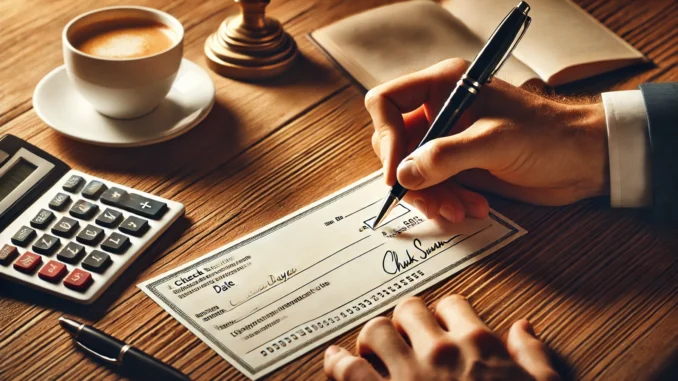
Writing a check might seem like an outdated practice in the age of digital payments, but it remains an essential financial skill. Whether you’re paying rent, making a donation, or sending money securely, knowing how to write a check correctly can help you avoid errors and prevent fraud.
Step-by-Step Guide to Writing a Check
1. Write the Date
In the top right corner of the check, write the current date. This helps the recipient and the bank process the check correctly.
2. Fill in the Payee’s Name
On the “Pay to the Order of” line, write the full name of the individual or business receiving the check. Avoid abbreviations or nicknames to prevent any issues with processing.
3. Enter the Payment Amount in Numbers
In the box next to the dollar sign ($), write the amount you are paying in numerical form (e.g., “125.50”). Make sure it is clear and legible to prevent alterations.
4. Write the Payment Amount in Words
Below the payee’s name, write the payment amount in words. If the amount is $125.50, write “One hundred twenty-five dollars and 50/100.” This prevents any disputes over the amount.
5. Write a Memo (Optional)
In the memo line at the bottom left, you can write a note about the purpose of the check (e.g., “Rent for July” or “Invoice #1234”). While optional, it can help with record-keeping.
6. Sign the Check
In the bottom right corner, sign your name as it appears on your bank account. Your signature authorizes the check, making it valid.
Common Mistakes to Avoid When Writing a Check
- Misspelling the Payee’s Name – Double-check the name to prevent processing issues.
- Writing the Wrong Amount – Ensure the written and numerical amounts match.
- Forgetting to Sign the Check – A missing signature makes the check invalid.
- Postdating a Check Incorrectly – Some banks may process postdated checks immediately.
Frequently Asked Questions
1. Can I write a check in pencil?
No, always use a pen to prevent alterations and fraud.
2. What happens if I make a mistake on a check?
If it’s a minor mistake, cross it out neatly and write the correct information above it. If it’s a major mistake, void the check and write a new one.
3. How long is a check valid?
Most checks are valid for six months, but this depends on the issuing bank’s policies.
Conclusion
Writing a check correctly ensures smooth transactions and protects you from financial mishaps. By following these simple steps, you can confidently issue checks for payments when needed.
Leave a Reply